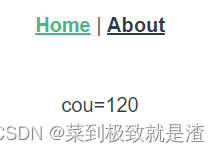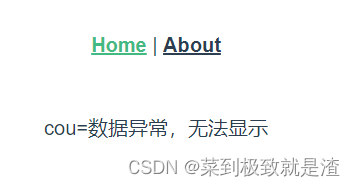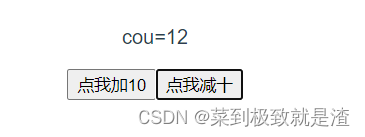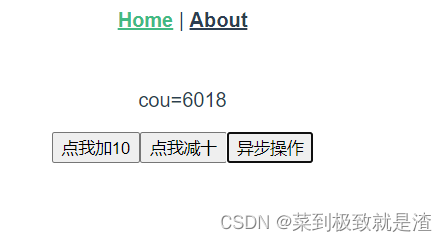目录
一、Vuex是干什么的
vuex的出现就是为了更加方便地管理组件之间的数据交互,他就是一个状态管理模式。Vuex的核心我们最常用的有四个:State,Getter,Mutation,Action。
二、Vuex状态管理核心
(1)State
State是状态,储存组件中的数据 ,如下代码。
//Homeview.vue <template> <div class="home"> //使用如下方式读取state中的数据 <p>cou={ { $store.state.cou }}</p> </div> </template> //store中的index.js 也就是vuex的配置文件 import { createStore } from 'vuex' export default createStore({ state: { cou: 120 }, getters: {}, mutations: {}, actions: {}, modules: {} })

(2)Getter
Getter的作用就是过滤数据,具体我们看下面的代码展示。
//Home.view <template> <div class="home"> <p>cou={ { $store.getters.guo }}</p> </div> </template> //vuex的配置文件 store下的index.js import { createStore } from 'vuex' export default createStore({ state: { cou: 12 }, getters: { //函数名字自己取 guo(state) { //cou小于100无法显示 if (state.cou > 100) { return cou; } else { return '数据异常,无法显示'; } } }, mutations: {}, actions: {}, modules: {} })

(3)Mutation
Mutation可以帮助我们更改store中的状态,它类似是一个事件,每个mutation都有一个回调函数,这个回调函数就是实际进行状态更改的地方,他会接收state为第一个参数。具体看代码展示。
//vuex的配置文件 import { createStore } from 'vuex' export default createStore({ state: { cou: 12 }, getters: { //函数名字自己取 guo(state) { if (state.cou > 100) { return cou; } else { return '数据异常,无法显示'; } } }, mutations: { setcou1(state, n) { state.cou += n; }, setcou2(state, n) { state.cou -= n; } }, actions: {}, modules: {} }) //Homeview.vue <template> <div class="home"> <p>cou={ { $store.state.cou }}</p> <button @click="handle1">点我加10</button> <button @click="handle2">点我减十</button> </div> </template> <script> // @ is an alias to /src export default { name: 'HomeView', methods:{ handle1(){ this.$store.commit("setcou1",10); }, handle2(){ this.$store.commit("setcou2",10); } } } </script>

(4)Action
Action与Mutation其实你可以理解成一样,不过需要记住Action实现的是异步操作,比如说放个网络请求,你只能将它放在Action中
//配置文件 import { createStore } from 'vuex' import axios from 'axios'; export default createStore({ state: { cou: 12 }, getters: { //函数名字自己取 }, mutations: { setcou1(state, n) { state.cou += n; }, setcou2(state, n) { state.cou -= n; } }, actions: { yibu({ commit }) { //第一个参数写对应的网址即可 axios.get("") .then(res => { commit("setcou1", res.data[0]); }) } }, modules: {} }) //Homeview.vue <template> <div class="home"> <p>cou={ { $store.state.cou }}</p> <button @click="handle1">点我加10</button> <button @click="handle2">点我减十</button> <button @click="yibucaozuo">异步操作</button> </div> </template> <script> // @ is an alias to /src export default { name: 'HomeView', methods:{ handle1(){ this.$store.commit("setcou1",10); }, handle2(){ this.$store.commit("setcou2",10); }, yibucaozuo(){ this.$store.dispatch("yibu"); } } } </script>
